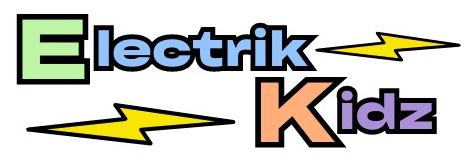
Do you remember learning to read when you were younger? It was a magical journey of connecting letters with sounds and finally unlocking the power of literacy. That same amazing process can feel intimidating for our young students today. Still, it doesn’t have to be – introducing beginning sounds through phonics effectively sets children up to become confident readers.
Phonics uses a system that teaches kids how letter combinations represent different word sounds. Through systematic practice and repetition, kiddos will recognize patterns leading to reading fluency. In this article, we’ll explore why phonics works so well for learners and some ideas on how to make it enjoyable!
Frustrated with your Child’s lack of Phonics Knowledge?
Introducing the Power of Phonics! Our program focuses on teaching children the beginning sounds of words, which is essential to reading success. Through structured activities and hands-on fun, kids will learn to recognize and use all necessary phonetic skills.
With Power of Phonics, your kid will better understand language structure they can apply in and outside the classroom. From learning simple three-letter words to more challenging six or seven-letter ones – you can feel confident knowing that your little one knows what they need for proper literacy development.
Discover more by continuing to read!
The Role of Phonics in Language Development

Phonics is an important aspect of language learning, and it begins with understanding the sounds that make up words. Kids learn to isolate syllables, identify rhyming patterns, blend individual sounds to create words, and decode written text.
Some of the roles of phonics in language development include:
- Building a strong reading foundation.
- Developing phonemic awareness (the ability to recognize and distinguish individual sounds).
- Improving spelling accuracy and word recognition.
- Expanding vocabulary, pronunciation, and comprehension skills.
As your child becomes more proficient in phonics, they are better equipped to spell and read unfamiliar words. This skill is essential for your kid to become an independent reader and writer.
Methods for Teaching Beginning Sounds
There are plenty of fun and interactive ways to help kids learn beginning sounds. The goal is to make it enjoyable so children feel excited about the process.
Here are a few ideas for teaching beginning sounds:
- Word Families – Grouping words with similar beginnings, middles, or ends encourages kids to recognize patterns in language structure. For example, when grouped, words like cat, rat, and mat will help kiddos learn that “at” is the common ending.
- Phonics Games – Playing games such as flashcards or matching helps children build the skills to recognize the sounds of letters. You can also look online for phonics activities to use with your youngsters.
- Songs and Rhymes – Utilizing rhymes, chants, or songs helps to reinforce the concepts kids are learning. It’s important to pick ones that are age-appropriate and fun for them to sing along.
Providing a safe and supportive environment is key when introducing phonics to kids. Making learning exciting is important so your little ones look forward to the process and stay engaged.
Introduction to our Beginning Sounds Game
Our Beginning Sounds game is a great way to help kids practice and master the power of phonics. Through fun activities, children can explore the sounds that make up words. Learners will learn to listen for and interactively identify beginning sounds with audio and visual prompts.
The game is tailored to teach beginning sounds through four exciting levels. In the first level, kids will learn to isolate the beginning sounds of a word. The next three levels introduce more complex skills, such as rhyming and blending.
With our Beginning Sounds game, your child can gain confidence in their phonics knowledge with a fun and interactive experience!
Frequently Asked Questions About The Power of Phonics: Introducing Beginning Sounds to Kids
Q: What is the Power of Phonics?
A: The Power of Phonics is a concept that focuses on teaching kids the sounds that makeup words. Children can learn to recognize and use phonetic skills through structured activities and hands-on fun for reading success.
Q: How does phonics help language development?
A: Phonics is an important part of language development. It helps kids to develop phonemic awareness, which is the ability to recognize and distinguish individual sounds.
Q: What methods are used for teaching beginning sounds?
A: Several approaches can be used to teach beginning sounds. These include word families, phonics games, songs, and rhymes. Q: What age group is this game appropriate for?
Conclusion
Focusing on phonics and introducing beginning sounds is an invaluable and lasting tool when it comes to teaching reading skills. With some practice, patience, and guidance, children can easily absorb these important lessons that will stay with them far into the future.
As a parent or teacher, take the time to explore activities and games that can keep the learning process fun. This could be as simple as going on a letter hunt around the house or exploring sound games online that connect everything from letters and sounds to word identification. No matter what you do, discuss progress openly with your child so that they further understand what everyone is working together to accomplish—building terrific little readers!
Subscribe to our email newsletter to get the latest posts delivered right to your email.

Comments